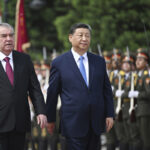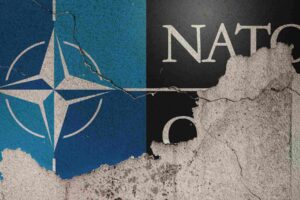Event
A political crisis is growing in Ecuador, where centre-right President Guillermo Lasso is set to face an impeachment trial on the grounds that he was allegedly aware of corruption surrounding oil and gas contracts. Lasso is less than halfway through his four-year term that ends in 2025, and has already narrowly survived an impeachment vote in 2022. The oversight committee is currently producing a report with a recommendation on whether an impeachment trial in the National Assembly should be held. If this trial takes place, a final vote would be held mid-May.
Impact
The ruling comes as Lasso struggles to tackle a surge in violent crime (Ecuador is a transit point for drugs en route to the USA and Europe, which is a cause of violence and gang activity). His popularity has been sinking amid a necessary fiscal consolidation in the past years, which is an unpopular move in general. Moreover, he has become a lame-duck president following a major defeat in the February referendum and local elections that weakened his already fragile political standing. As a result, congress, led by a left populist faction forged by former President Rafael Correa (2007-2017), has been emboldened to try to unseat the President.
If the impeachment motion is successful, Vice-President Alfredo Borrero would assume the presidency. Given that he is from the same party as Lasso, he would likely face the same governing challenges, which would probably lead to a heightened risk of unrest. An unsuccessful impeachment would also lead to further governing challenges and widespread unrest, especially if Lasso opts for a constitutional clause called “mutual death” (“muerte cruzada”). The clause, which has never been used, allows the president to unilaterally dissolve the National Assembly and call for new elections. After this step, the president would rule by decree for a period of around six months. This would be a highly unpopular move and presumably lead to widespread unrest as well. So either way, severe unrest is on the cards in this highly polarised country.
The political turmoil has already alarmed investors, which in turn has led to a significant increase in Ecuador’s sovereign risk premium. The fear is that Lasso, who has kept to macro orthodox policies, will be replaced by a government that prioritises spending. For the time being, the administration’s market-friendly reform agenda has already been put on hold, as Lasso will focus on his political survival.
Public finances remain Ecuador’s Achilles’ heel. Despite acceptable public debt ratios on paper (60.9% of GDP and 207.1% of public revenue in 2020), public debt was restructured in cooperation with the bondholders.
Today, the country still has a historically elevated public-debt-to-GDP ratio, reported at 57% of GDP at the end of 2022, indicating an elevated debt sustainability risk, especially when combined with high sovereign spreads, large policy uncertainties, a history of serial debt default and difficult market access. However, these risks will be mitigated in the short term because the bulk of Ecuador’s commercial external debt was restructured in 2020, leaving no amortisation payments due on the restructured external debt during the remainder of Lasso’s term. Moreover, in September 2022, the government also reprofiled its Chinese loans, providing relief worth some USD 1.4 billion until 2025. This is a big success in a period where China has prolonged debt restructuring talks with many other countries, e.g. Suriname.
Nevertheless, in the medium term, financing could become difficult as IMF disbursements ended in December 2022 with no successor programme in sight, while the country’s ability to regain access to external markets remains uncertain due to its serial defaulter status, and borrowing capacity in the local capital market is small, especially if the government opts for fiscal largesse. Given the additional high uncertainties such as volatile oil prices (Ecuador is an oil exporter), vulnerability to natural disasters (its location in the Ring of Fire can lead to brutal earthquakes, as witnessed in 2016) or political crisis, another sovereign debt default is likely and could have severe implications on the economy.
The ST political and MLT political risk classification remain unchanged for now for this fully dollarised economy. For the short-term risk, foreign exchange reserves are historically high for the country while the short-term external debt level is relatively moderate. Ecuador’s high MLT risk rating already reflects its elevated external debt and debt service ratios vis-à-vis current account receipts, weak public finances, the strained political situation, its vulnerability to the tightening of the financial conditions and its economic lack of diversification despite expected current account surpluses. The business environment risk rating has a negative outlook as severe unrest could hurt the economy.
Source: Crecendo
















